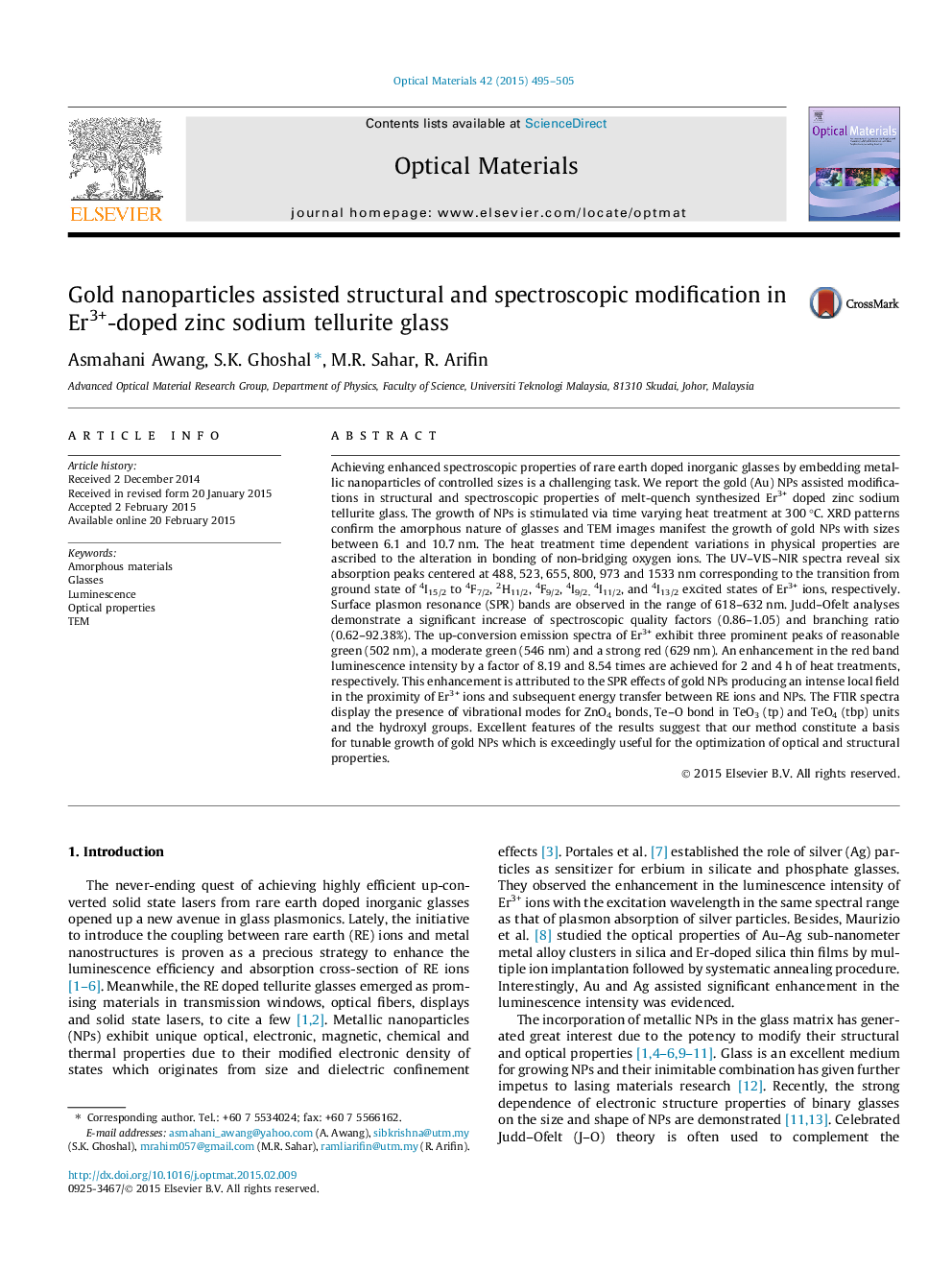| Article ID | Journal | Published Year | Pages | File Type |
|---|---|---|---|---|
| 1493985 | Optical Materials | 2015 | 11 Pages |
•Gold NPs embedded Er3+-doped zinc-sodium tellurite glasses with time varying heat treatment have been synthesized.•Variation in Judd–Ofelt parameters and radiative properties assisted by growth of NPs.•Enhancement or quenching in luminescence intensity stimulated by various size and shape of NPs.•SPR effect from gold NPs exert prominent enhancement in UC emission intensity.
Achieving enhanced spectroscopic properties of rare earth doped inorganic glasses by embedding metallic nanoparticles of controlled sizes is a challenging task. We report the gold (Au) NPs assisted modifications in structural and spectroscopic properties of melt-quench synthesized Er3+ doped zinc sodium tellurite glass. The growth of NPs is stimulated via time varying heat treatment at 300 °C. XRD patterns confirm the amorphous nature of glasses and TEM images manifest the growth of gold NPs with sizes between 6.1 and 10.7 nm. The heat treatment time dependent variations in physical properties are ascribed to the alteration in bonding of non-bridging oxygen ions. The UV–VIS–NIR spectra reveal six absorption peaks centered at 488, 523, 655, 800, 973 and 1533 nm corresponding to the transition from ground state of 4I15/2 to 4F7/2, 2H11/2, 4F9/2, 4I9/2,4I11/2, and 4I13/2 excited states of Er3+ ions, respectively. Surface plasmon resonance (SPR) bands are observed in the range of 618–632 nm. Judd–Ofelt analyses demonstrate a significant increase of spectroscopic quality factors (0.86–1.05) and branching ratio (0.62–92.38%). The up-conversion emission spectra of Er3+ exhibit three prominent peaks of reasonable green (502 nm), a moderate green (546 nm) and a strong red (629 nm). An enhancement in the red band luminescence intensity by a factor of 8.19 and 8.54 times are achieved for 2 and 4 h of heat treatments, respectively. This enhancement is attributed to the SPR effects of gold NPs producing an intense local field in the proximity of Er3+ ions and subsequent energy transfer between RE ions and NPs. The FTIR spectra display the presence of vibrational modes for ZnO4 bonds, Te–O bond in TeO3 (tp) and TeO4 (tbp) units and the hydroxyl groups. Excellent features of the results suggest that our method constitute a basis for tunable growth of gold NPs which is exceedingly useful for the optimization of optical and structural properties.
Graphical abstractOstwald ripening process manifests general growth processes in nature. Particles with different sizes and shapes tend to form assembly to minimize free energy. The particles exchange atoms leading to the formation of bigger particles at the expense of smaller one, followed by the shrinkage and disappearance of small particles.Figure optionsDownload full-size imageDownload high-quality image (129 K)Download as PowerPoint slide
